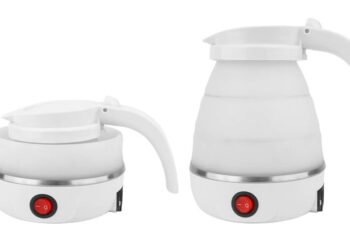Wander and Experience is reader-supported. When you buy through links on our site, we may earn an affiliate commission.
An iconic part of the Japan tourism experience, the Japan Rail Pass has long been one of the best tools for travelers visiting the Land of the Rising Sun. Our guide helps to provide the best Japan Rail Pass tips to those considering ordering one. While the pass is easy to use and offers tremendous savings to those who can get enough use, there are a number of areas where many visitors find themselves making the same mistakes.
Below are ten of the most common mistakes that visitors make using the Japan Rail Pass. These are in no particular order and have been pulled together from both experiences, having purchased many Japan Rail Passes over the years, and through plenty of discussions with other travelers that have made oversights while planning.
1. Don’t buy a Pass if You Don’t Need One
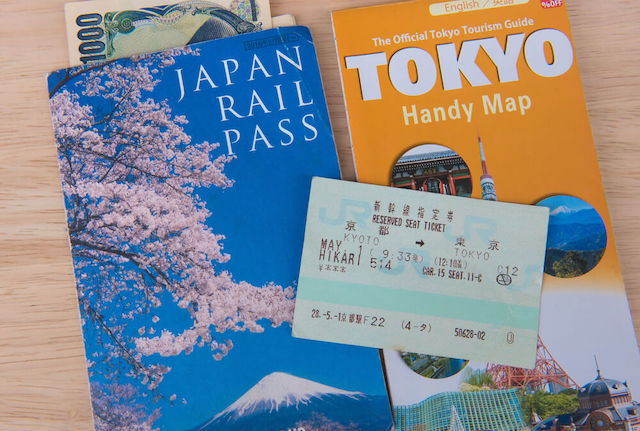
One of the most common and costly mistakes visitors to Japan make with the Japan Rail Pass is buying one for an itinerary where it won’t get enough value. While riding the Shinkansen (known as the bullet train to many visitors) is an iconic experience in Japan, many visitors will not require a Japan Rail Pass due to an itinerary where it doesn’t save money.
For example, a typical travel itinerary for many first-time visitors is to fly into Tokyo, visit Tokyo for a few days, then take the Shinkansen to Kyoto for the second half of the trip before returning to Toyko for the return flight.
While it may seem like an easy decision to get a rail pass for this standard itinerary, the cost of a round-trip on the Shinkansen will only come out to ¥27,300, below the ¥29,650 price of an adult 7-Day Ordinary Rail Pass.
A different scenario that is not uncommon amongst Tokyo visitors is buying a Japan Rail Pass to take day trips to areas covered by other rail passes. However, the Japan Rail Pass is unnecessary, as various rail passes are for sale by JR East, covering different locations around Tokyo and to the North of the city. The cheapest of these passes is ¥10,180 for a 3-Day pass and covers up to Nikko.
By researching your rail ticket needs, and the extent that you plan on using the Japan Rail Pass, you can avoid overpaying for what you need during your trip.
2. Don’t Pay Too Much for the Pass
There are three ways to purchase a Japan Rail Pass at the moment:
- Buying the pass in Japan at the designated ticket offices of Japan Rail at certain airports or train stations. (This arrangement is valid until March 31, 2022, though it could be extended.)
- Ordering an exchange order for a pass from the Japan Rail Pass website.
- Ordering an exchange order for a pass from an authorized sales office or agent like JR Pass, an online retailer.
The main difference between these three methods is price. The first two methods have a cost that is 10-13% higher per pass, depending on the pass type.
For example, an Adult 7-Day Ordinary Pass costs ¥29,650 from an authorized sales office or agent, while the exact same pass costs ¥33,610 for both buying it in Japan or ordering an exchange order from Japan Rail directly.
Buying the pass from an authorized sales office like JR Pass makes for an easy savings of ¥3,960.
What is an exchange order?
Not to confuse anyone with the term, an exchange order is simply a voucher that you can use to redeem a Japan Rail Pass. Since passes require activation from the Japan Rail ticket office, visitors that pre-order their Japan Rail Pass will receive an exchange order that can be redeemed when they arrive in Japan.
Visitors can take exchange orders to the Japan Rail ticket office upon arrival in Japan. Ticket agents will verify the exchange order details against the visitor’s passport to confirm the pass’s validity and issue a pass for that day or starting within the next 30 days.
3. Not Making Reservations When Picking Up The Pass
The earlier you can reserve your tickets with the Japan Rail Pass, the more likely you are to get the seats you’d prefer at the times you want to travel.
Those who have ordered and received their exchange order before arriving in Japan can activate their pass as soon as they arrive in Japan at a designated ticket office. Even if you are not planning on using your pass until a later date, you can activate it with a starting date up to 30 days in advance, and at the same time, book reservations for future dates.
Making your seat reservations as early as possible reduces the risk of having train times sold out, missing out on a specific seat, and, even worse, having to stand for a long train ride in the unreserved car.
The best part is that you can have tickets canceled and reissued as many times as you need to, so there is little commitment, though a lot to lose by passing on making ticket reservations.
Research the train routes and time times you would like to travel before you arrive in Japan, then take your exchange order to redeem your pass and book tickets as early in your trip as you can.
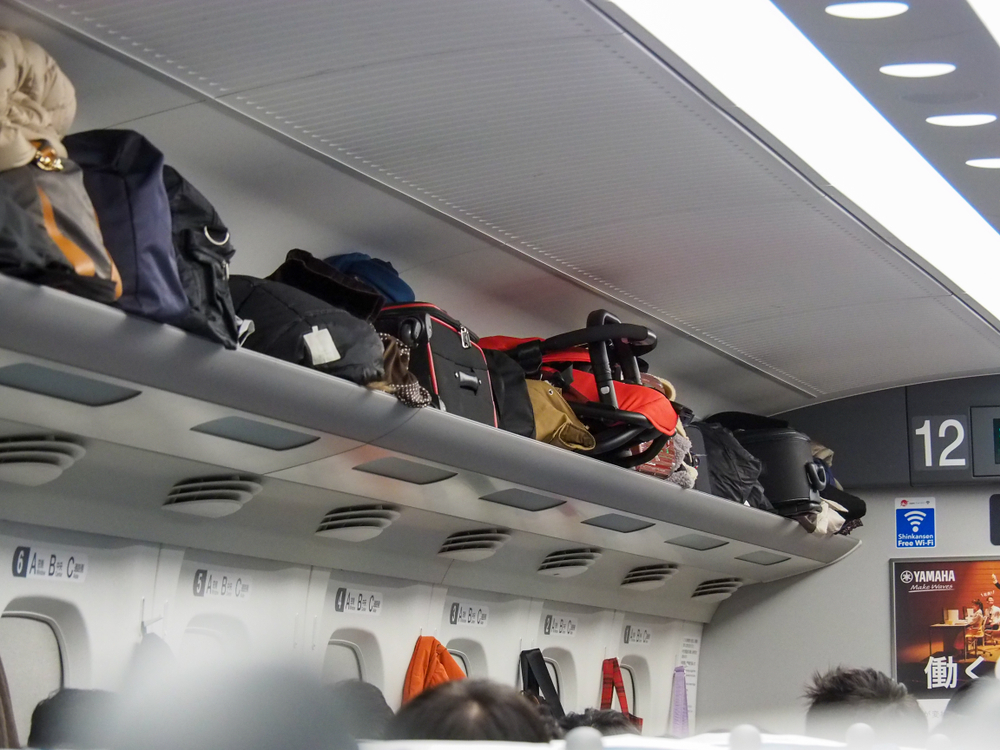
4. Not Having a Plan for Excess Baggage
The combination of a multi-day rail pass that can get you all around Japan and large pieces of luggage is a dilemma that many visitors to the country must confront.
Do you travel halfway around the world to Japan with only a backpack to ease the hassle with your rail pass? Or do you bring the heavy luggage along only to have to lug it onto and off of trains, squeezing it behind seats the whole time?
The concern of luggage storage on the Shinkansen is a question of luggage space for gifts, souvenirs, more room for extra clothes, and the freedom to explore the country conveniently. Unfortunately, there is no perfect answer to this dilemma, though a few suitable solutions exist.
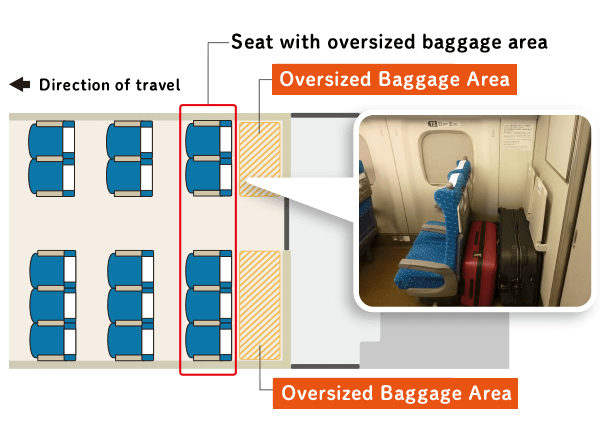
What storage is available for baggage on the Shinkansen?
Along the top of the seats on both sides of the train are overhead shelves that store bags, backpacks, and carry-on-sized rolling luggage. There is also storage for large bags behind the last two seats in each car, though these seats require a specific reservation.
Option One – Limit Your Large Luggage
Those traveling as a couple can limit their large luggage to a single bag, along with a combination of backpacks, totes, and a rolling carry-on. This will help you and your travel partner have a balance of having storage space and managing the bags with a reasonable level of comfort.
Option Two – Store Your Luggage at the Station
Larger Japanese train stations have lockers available for storage; some, like Tokyo Station, can store bags as large as a large rolling suitcase for ¥600 per day. So leaving your large suitcase and any smaller bags at the station before exploring the country is a great way to limit your hassle.
The downside to this strategy is that these lockers are known to sell out, leaving you in a last-minute jam if you were expecting to ditch a bag or two.
Option Three – Leave the Bags at a Hotel
With many Japan Rail Pass users starting and finishing in the same city before flying out, you can plan your itinerary to make sure you have a night in your arrival/departure city on each side of your rail journey. This will allow you to leave extra bags at the same hotel for free.
For example, if you were flying into and out of Tokyo on your flights to and from home, consider booking the same hotel in Tokyo and asking the hotel to hold onto your bags. This will save money on storage and ensure you don’t get to the station to find all the lockers in use.
Make sure you confirm with the hotel before booking any non-refundable reservations. While most hotels in Japan are open to luggage storage, it is common for Japanese to use a courier service to send their luggage ahead when they travel; some hotels may limit the number of days they will allow it.
Option Four – Go Small with Bags if You Can
While not an optimal strategy for most visitors to Japan, an ideal packing strategy for those looking to have the freedom to explore with their rail pass is packing light.
If you can make it through a trip with a backpack and rolling carry-on, you will have the ultimate freedom to zip up and down Japan’s main islands, jumping off the train to see a sight and then getting on another one and moving on.
5. Not Planning Your Days Around the Validity of the Pass
Some travelers make their itinerary first, then decide whether to order a Japan Rail Pass, and others decide on ordering the pass first, then make plans around the pass. Be part of that second group.
In planning your Japan trip budget, there are not many things worse than having to buy an extra rail ticket outside the days that your rail pass is valid.
Examples of this misplanning are usually related to day trips out of Tokyo. For example, a typical trip plan may involve a 7-day rail pass that takes visitors from Tokyo airport to the Shinkansen to Kyoto or Osaka. After time in the Kansai region, and possibly a day trip to see Hiroshima, most return to Tokyo by Shinkansen.
With 3-5 days left at the end of the trip to explore Tokyo, typical visitors feel a more urgent desire to explore Tokyo. This can cause visitors to forego a day trip out of Tokyo with the final day of the rail pass to instead get out in the city and see the Japanese capital.
After a few days in Tokyo, a visitor may feel as though they ticked off the top attractions in Tokyo, and in fear of missing out on seeing another top sight, then pay for train tickets to Nikko, Kamakura, or to see Mount Fuji.
By optimizing your itinerary to understand the time you want to spend in each city and grouping the train travel within the 7-day period of the cheapest Japan Rail Pass, you’ll avoid buying extra tickets or feeling the need to get a more expensive pass that is not necessary.
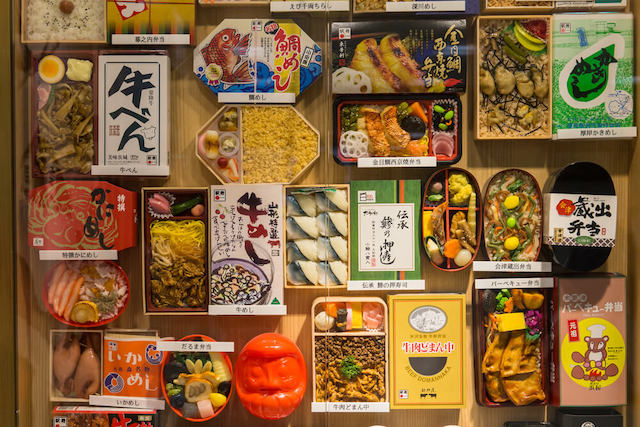
6. Rushing the Station Experience
Considering the lead time built into going to the airport, traveling by rail is a far more efficient experience when compared to flying. Rail travel in Japan takes the idea of railway efficiency to the limit, with trains arriving and leaving precisely at the scheduled time and busy train stations that feel surprisingly in order.
Despite the option to take advantage of Japan’s efficient train experience, it is worth taking it slow and giving yourself some extra time at the station to take in everything.
Western tourists who aren’t used to state-of-the-art rail travel will be fascinated by the infrastructure and services built around the experience. For example, stations offer plenty of shops selling small bento box meals made explicitly for train travel or convenience stores and restaurants with takeaway menus, drinks, and snacks.
Stores offer regional specialty snacks and cakes or gourmet foods for travelers to buy omiyage, which are souvenirs that family members, friends, and colleagues will buy for each other when visiting another region as a gift.
The entire train experience makes for a unique view into Japanese culture, where the railways have long played a critical role in how the country operates every day.
Don’t miss out on experiencing every aspect of it by only leaving yourself 5 minutes to get through the station and onto the train.
7. Not Using the Pass to Get to or from the Airport
Outside of the Shinkansen, one of the most expensive train fares that visitors to Japan will see is the train from the airport. This is especially true for travelers arriving at Narita International Airport outside Tokyo and Kansai International Airport outside Osaka and Kyoto., which are typical airports for international flights.
The Narita Express from Narita Airport to Tokyo Station costs ¥3,070 one-way, and the JR Haruka Express from Kansai Airport to Kyoto Station costs ¥3,500 one-way.
Visitors with a 7-day pass staying in Japan for nine days or more should make sure one of the airport train journeys is included on the days while the pass is activated. Unless you have a higher cost use for the pass on other days of your trip, ensuring the airport journey is covered will help to maximize the savings.
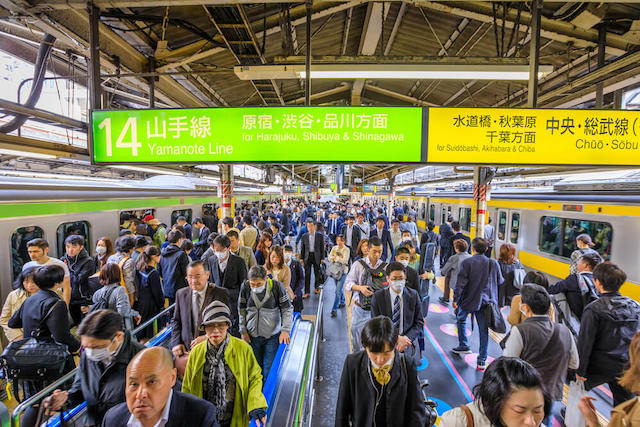
8. Don’t Overestimate the Pass Benefit in Tokyo
While the Japan Rail Pass works in Tokyo on the JR East lines, such as the iconic Yamanote Line, the pass’s benefit can be relatively limited in the city.
With trips around Tokyo’s central core generally costing less than ¥200 between the popular neighborhoods, you can estimate the pass value to be no more than ¥1000 for a busy day sightseeing. This is a relatively low value compared to a ¥13,650 one-way trip on the Shinkansen.
Beyond the actual cost savings, JR East’s lines in Tokyo are not nearly as convenient as the Tokyo Metro’s lines to get around the city and see the top neighborhoods and attractions.
Justifying the benefit of the pass from use in the city is a stretch, though if you have a valid pass on days you are visiting Tokyo, it will help you increase your savings if you can work out additional trips around the city using your pass.
9. Not Appreciating the Flexibility the Pass Provides
It’s hard to overestimate the value that the Japan Rail Pass can provide visitors intent on maximizing their savings. To many, the rail pass is a source of transportation that can get them to where they want to go in Japan; though, to some, it is an incredible travel tool that is an enjoyable experience of its own.
The Japan Rail Pass provides as many rail tickets as a visitor can use during the duration of their pass. Given the speed of the Shinkansen and the serenity of the train experience,
10. Not Taking Care of the Pass
Finally, one of the most severe mistakes to avoid, don’t lose track of your Japan Rail Pass. While traveling around Japan, it’s easy to lose track of your rail pass or rail tickets amongst plenty of small pieces of paper you’ll come across like convenience store receipts, baggage check tickets, airline tickets, and ATM receipts.
Avoid the urge to shove your rail pass into your bag, or set them separately onto your seat as you try to settle your luggage, backpack, and a bag of snacks or food as you board the train.
Set a specific zippered pocket or secure place to keep your pass and tickets and limit using that spot for anything else. This will help keep it safe and avoid losing it.
As a best practice, take a few photos of your pass when it’s issued to you. Japan Railways Group doesn’t guarantee that they will replace a lost pass, though having a photo and a receipt will help you make a better case than they should.
Bottom Line
The Japan Rail Pass is one of the best ways to save money when traveling to Japan, though visitors who fail to plan effectively may find that their savings are low to non-existent when making some common mistakes.
By planning ahead, you can avoid these costly mistakes, find significant savings, and enjoy a better experience on your trip to Japan with the Japan Rail Pass.











